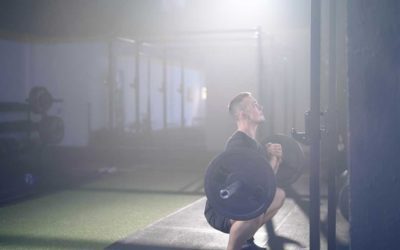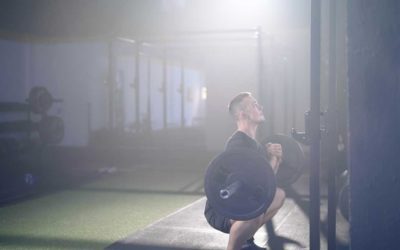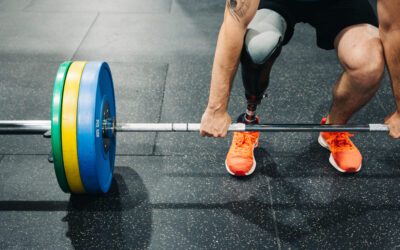Strength Training for Runners

As a runner, endurance training means improving your speed and stamina over greater distances. But what would you be capable of if you had stronger legs or thicker glutes?
Fred Ormerod, a full time fitness and healthcare pro with a strong military background, takes us through some of the nitty-gritty details around strength training for endurance runners. Expect to learn about the musculature involved in running, injury prevention methods, and a detailed look at which exercises to focus on to improve your running capacity—squats, lunges, calf raises, nordic curls, hip thrusts, plyometrics, even Olympic weightlifting.
Work on getting a stronger back squat for a few months in your off season and see just what kinds of running gains you make on the trails.
Fred Ormerod


Strength Training for Runners: A Stronger Body = Longer, Faster Runs
Traditionally “strength training” has been a dirty word for runners and endurance athletes. However, as we learn more about athletes’ physical requirements, strength training appears to benefit runners not just for performance, but also injury prevention.
Let’s consider why working on your strength should be a tool in any good runner’s arsenal and how best to start incorporating it into a weekly running program.
Anatomy refresher
Running uses your entire posterior chain and core. Here’s a quick look at some of those muscles in more detail.
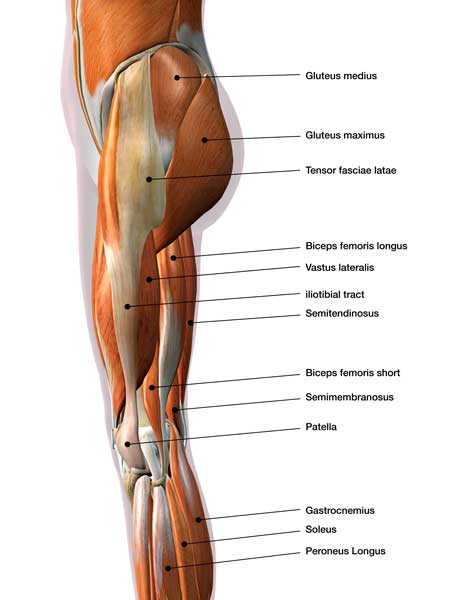
The muscles in your quads, like the vastus medialis, vastus lateralis, vastus intermedius, and rectus femoris, are involved in extending your knee and flexing your leg at the hip.
Your hamstring muscles—the biceps femoris, semitendinosus and semimembranosus flex your knee and support it through the entire running motion.
All of the muscles in your glutes, gluteus maximus, minimus, medialis and the piriformis are important flexors of the hip and femur; they help apply force to the floor and propel you forward.
Your calf muscles, gastrocnemius, soleus and anterior tibialis are responsible for flexing and extending your foot at the ankle.
We can’t forget the muscles of your core. Your diaphragm, spinal erectors, obliques, rectus abdominis and transverse abdominis are all involved when running. They help you breathe, stay upright, and stabilise your trunk.


DOWNLOAD
trainheroic’s
free APP
Performance
Having stronger muscle tissue, particularly in the posterior chain (#bootygainz), has been shown to give runners a boost in speed. Running performance is based on 3 factors: VO2 max, lactate threshold, and running economy.
Your VO2 max dictates how efficiently you can breathe in and use oxygen as energy for running. There’s evidence to suggest your VO2 max can be improved up to 25% by running for extended periods at roughly 70% training intensity. A high lactate threshold allows you to run fast for longer periods of time. This produces more energy anaerobically, which has the by-product of lactic acid.
Strength training can improve both of these circumstances, since your muscle fibres are where you store the ingredients required for aerobic and anaerobic energy systems to operate. But where strength work can really help is your running economy. The training stimulus will affect the balance of muscle tissue types and the forces an athlete is able to apply to the ground.
Using slow-motion video, scientists have seen that the speed at which “normal” and “athletic” people take a step while running is roughly similar. Where faster runners excel, apart from having the aerobic capacity to run the length of themselves, is in the force they can apply to the floor on each step.
An Olympic sprinter applies roughly 450kg of force to the floor each step. Mere mortals apply just 180-280kg of force when running. Since the force applied is greater, the stronger athlete’s step size is longer but takes roughly the same time. Hence, they run faster.
Running technique is a big deal and often overlooked in conventional training settings. A good runner leans forward, keeping their ankles, knees, hips and torso in line. Their strong muscles apply force to the ground to propel them forward.
Mitigating imbalances is also important for quality running technique. If a runner’s knees cave in, they might fix it by strengthening their abductors and adductors for better stability. The extent of these improvements doesn’t need to be massive to see benefits. Even the fastest track athletes in the world are often imbalanced given that they train counter-clockwise all the time.
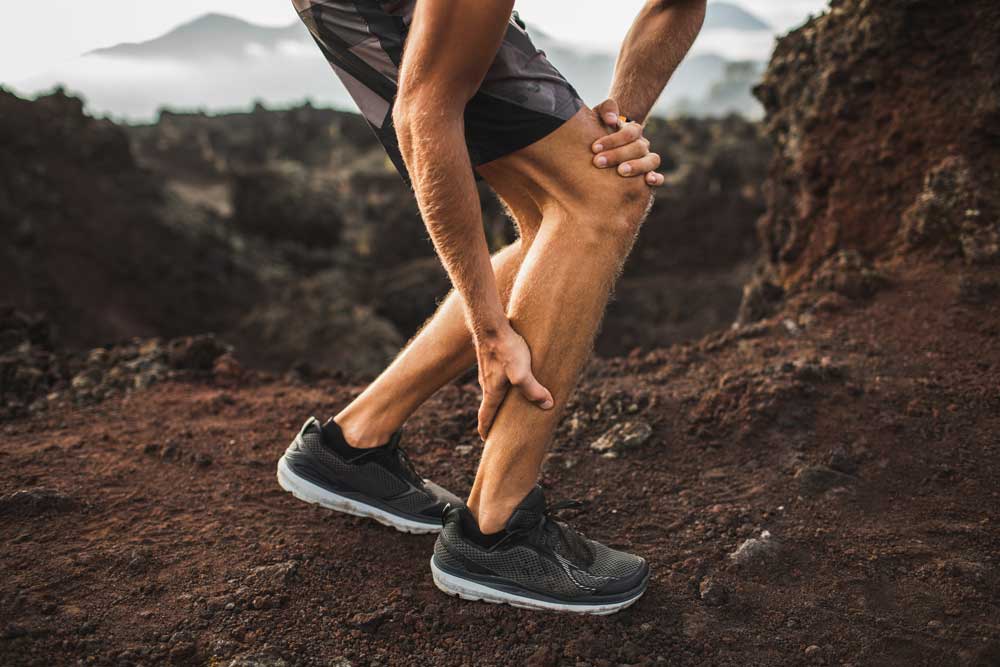

Injury prevention
Up to 50% of runners experience knee pain. Up to 32% of runners experience lower leg pain and 38% deal with upper leg pain. Common injuries include runner’s knee (patella femoral syndrome), shin splints, hamstring pulls, and Achilles tendonitis.
Where the stress level applied to tendons exceeds the tensile strength of the tendon is a risk for injury. Strength training helps mitigate this issue and allows you to gradually increase the intensity of your runs.
It’s now widely accepted that working on your overall physical strength helps prevent these kinds of injuries. Athletes who can back squat 1.5x bodyweight radically reduce their risks of running-related injuries. It’s worth noting that runners who land on their forefoot and focus on the eccentric loading of the calf muscles (going slow as calf muscles stretch) are also less prone to injuries.
Suggested exercises
Not sure where to start? Here’s a list of exercises that running athletes should consider incorporating into their program if they want more running power and bulletproof knees and hips:
Squats
The ultimate lower body builder, weighted squats can reduce your risk of injury and boost your sprinting power by strengthening your glutes, quads, and hamstrings. They also help develop upper trunk and core strength with efficient bracing and shoulder tension.
Lunges
These are a MUST to include in any running program— high volume lunges build muscular endurance, while heavy loads build unilateral strength. Work on those imbalances and get your glutes strong with weighted lunges.
Calf Raises
Again useful to help build muscular endurance and avoid injuries. Strong calves are an important muscle group in controlling what is known as the Windlass mechanism as the foot contracts to propel athletes forward fast.
Load-Bearing Rotation
Exercises that include rotation are important since every step whilst running uses minor rotations in the body that might lead to injury without proper training. Key areas to consider here are torque at the knees, hips and in the lower trunk. Exercises to target these areas might include: leg extensions, hip adduction/abduction and pallof press/cable chops to strengthen the core through rotation movements. Back extensions or deadlifts can also be incorporated to help support the lower back.
Nordic Curls
These might seem scary at first, but they’re a great exercise to eccentrically load the hamstrings at both ends (knee and hip). The science available suggests incorporating as few as 8 effective reps per week might help in supporting healthy hamstrings.
Hip Thrusts
Developing strong glutes helps athletes apply the most force to the floor while propelling themselves forward. That’s exactly what you’re doing when loading your hips during hip thrusts. The fastest Olympic sprinters have well-developed glute muscles. (A bigger booty never hurt anyone.)
Olympic Weightlifting
Olympic lifts are an awesome way to increase your strength and power. For those starting out in strength training, they may seem a little advanced. But breaking them down into smaller components can be just as effective at increasing your power. These simpler movements avoid the catching phase, which improves performance and speed for any non-Olympic lifting athlete. Examples include: mid-thigh pulls, clean high pulls, and jump shrugs.
Plyometrics
Going along with the theme of producing force off the ground, plyometrics (not to be confused with ballistic training, like box jumps or Olympic lifts) incorporate training where contact time (or intended contact time) doesn’t exceed 250 milliseconds. This helps to condition a runner’s tendons for multiple impacts. Be careful with this one, and be sure you’ve got a reasonable level of strength already to avoid training injuries.
The Marketplace: Shop Expert Programming from Real Coaches
Sometimes all you need to reach your destination on your fitness journey is an expert guide. We’ve got you covered.
The TrainHeroic marketplace is the only place to purchase programming from the World’s best coaches, delivered through the immersive training experience of the TrainHeroic app.
Browse from thousands of programs for any goal and every type of athlete.
Or, join a monthly programming membership to connect with a real coach and community of athletes training just like you. Try any programming subscription free for 7 days.


A strength training plan for runners
If you’re ready to start using strength training work to bolster your abilities as a runner, here is a suggested week you can work in with 2-4 runs:
Session 1:
Squat – 5×5 @RPE 8
Lunges – 4×6 each side @RPE8
GHD Back Extensions – 3×10 @RPE8, 2-0-0-0 Tempo
Pallof Press – 3×10 @RPE 8, 2-0-2-0 Tempo
Calf Raises – 3×15 @RPE 8, 3-0-0-0 Tempo
Session 2:
Trap Bar Deadlift – 5×5 @RPE 8
Goblet Side Lunges – 4×6 each side @RPE8, 3-0-0-0 Tempo
Nordic Curls – 4×3 @RPE8, Max-0-0-0 (concentric phase not required, wriggle up as needed)
Pogo Jumps – 15 reps EMOM 10 minutes @RPE 8, These can be band assisted to reduce impact if just starting/worried about achilles
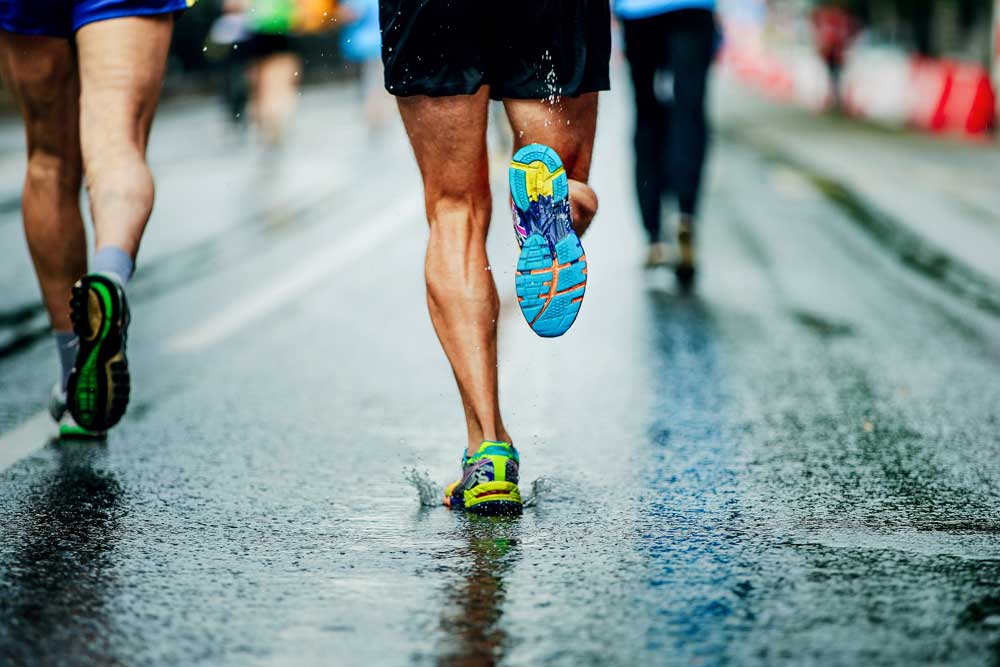

The best way to progress this simple program is to increase the weight you use over time. This might look like linear progression at first (adding 5-10lbs each week), but should also include some de-load weeks (with lower weights) around weekly runs. Since the intended stimulus for these sessions is strength, you could do fewer reps at higher weights.
Varying the exercise tempo (speed) is a useful and underutilised tool for many athletes in this scenario, too. Increasing the time under tension helps boost muscle stimulation when you’re still too green to go heavy. Eccentric and isometric training has been shown to improve outcomes for those suffering from and trying to prevent injuries as well.
As always, be mindful of your form and the complexities with these exercises. If you’re looking to improve your running with some strength work, it’s well worth building gradually. It defeats the purpose of preventing injuries if you end up pulling a hamstring.
Something to keep in mind: the chances of injuring yourself through proper strength training are slimmer than you might think. It’s also worth seeking some 1:1 assistance (via a personal trainer) to look out for any specific imbalances in your strength or gait. A good coach should be able to keep your goals in mind and get you moving in the right direction.
About the author
Fred Ormerod is a freelance coach, army reserve medic, nurse, masters student, and masseuse. He’s spent a decade working in healthcare and five years coaching in one of Edinburgh’s leading training facilities. Fred has helped clients trying to walk again, serving in the military, competing on the world’s strongest stage, and in other Olympic-style events. With a holistic training philosophy at his core, he feels any and all training goals are accomplishable with consistency.
Related articles
How To Zercher Squat: One Exercise To Rule Them All
I have a secret weapon exercise that will get us really close; it has a lot of bang for its buck. It builds massive quads, big glutes, a wide back, and some awesome biceps. Exactly what every athlete needs.
What Does Paralympic Strength Training Look Like?
Paralympians undergo rigorous training when preparing for the Paralympic Games. While the Paralympics only last about two weeks, getting ready takes place all year, as these athletes are among the most dedicated in the world. Here’s how people with disabilities...
Your Guide to Passive Recovery Strategies
What is Passive Recovery? I don’t think that there exists a complete guide for athletes that tackles the underrated topic of “Recovery-Regeneration” strategies. I plan to disclose a majority of the scientific and practical information that I know of on this topic and...


Join the community
Sign up for the latest training news and updates from TrainHeroic



About TrainHeroic
Support
Made with love, sweat, protein isolate and hard work in Denver, CO
© 2022 TrainHeroic, Inc. All rights reserved.

